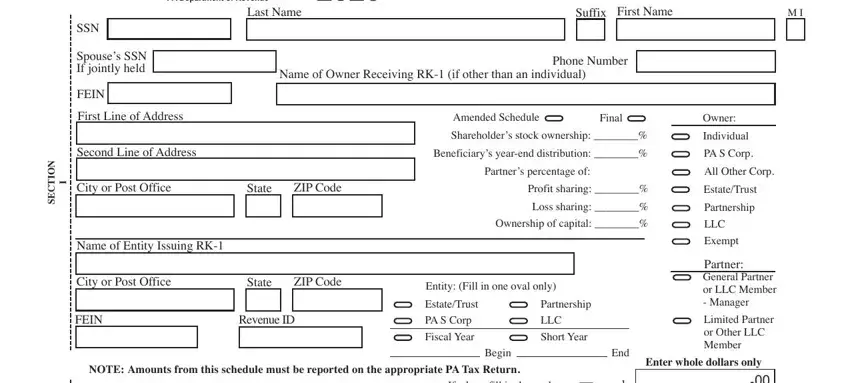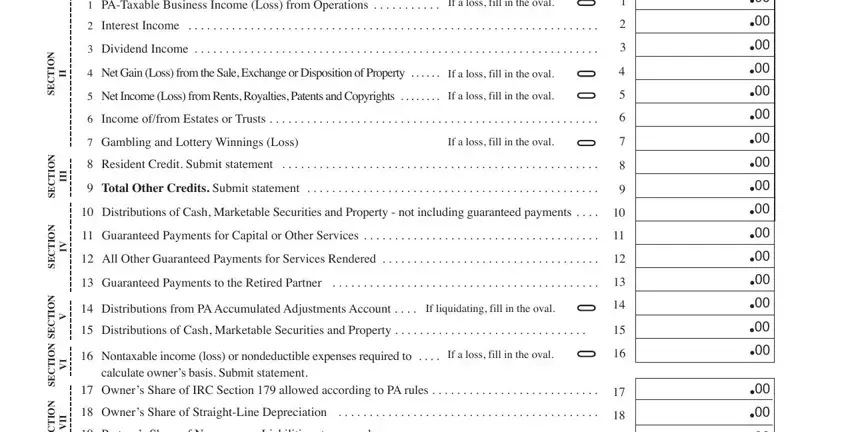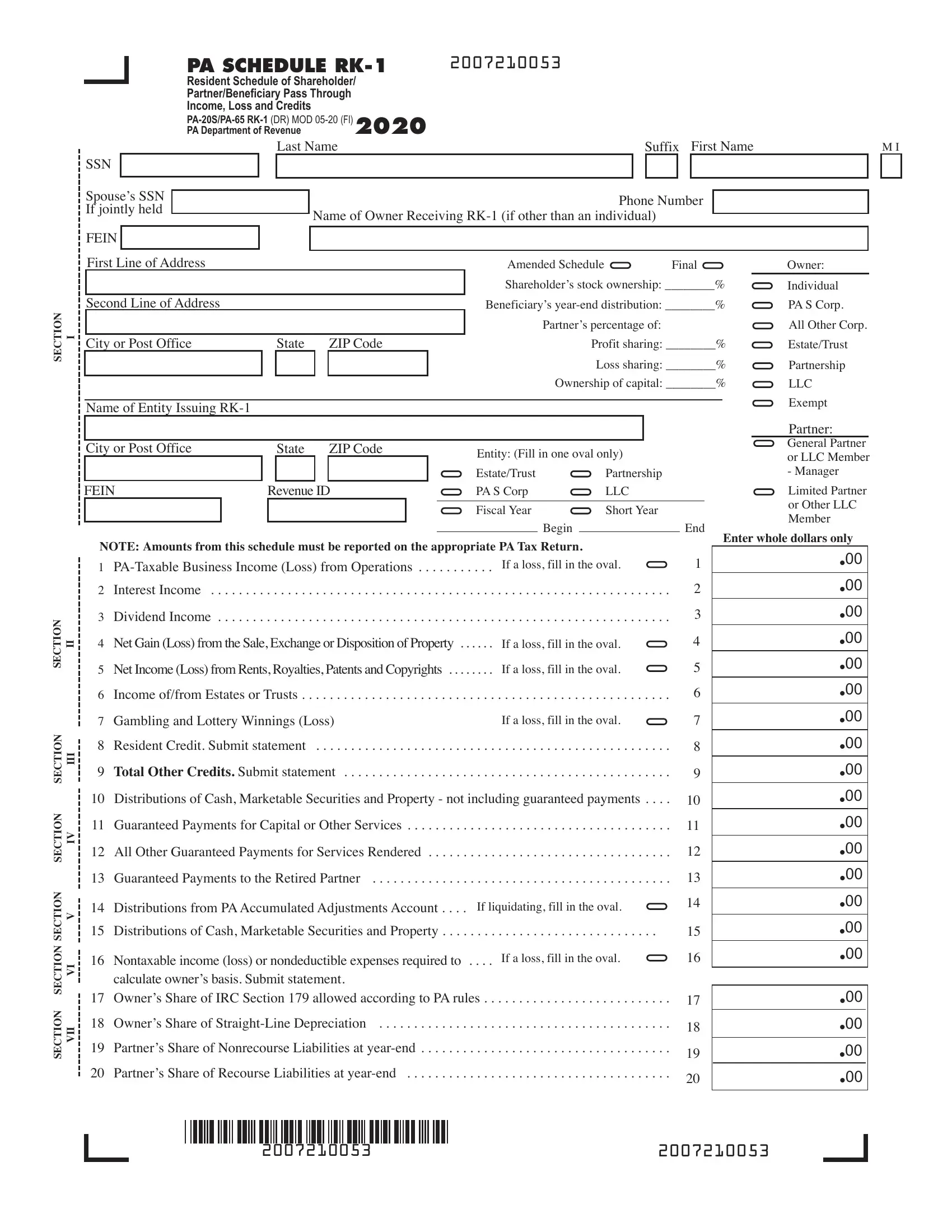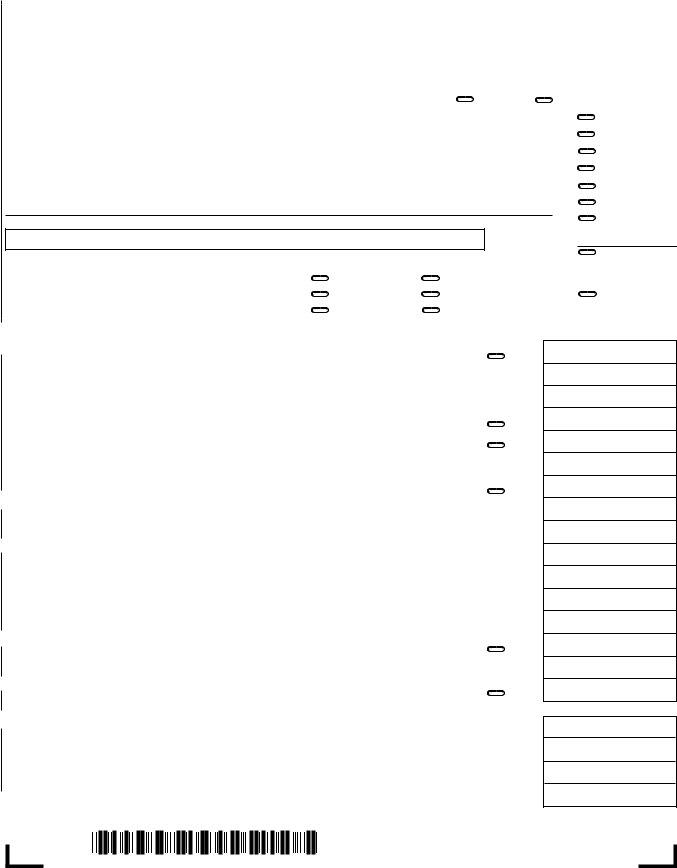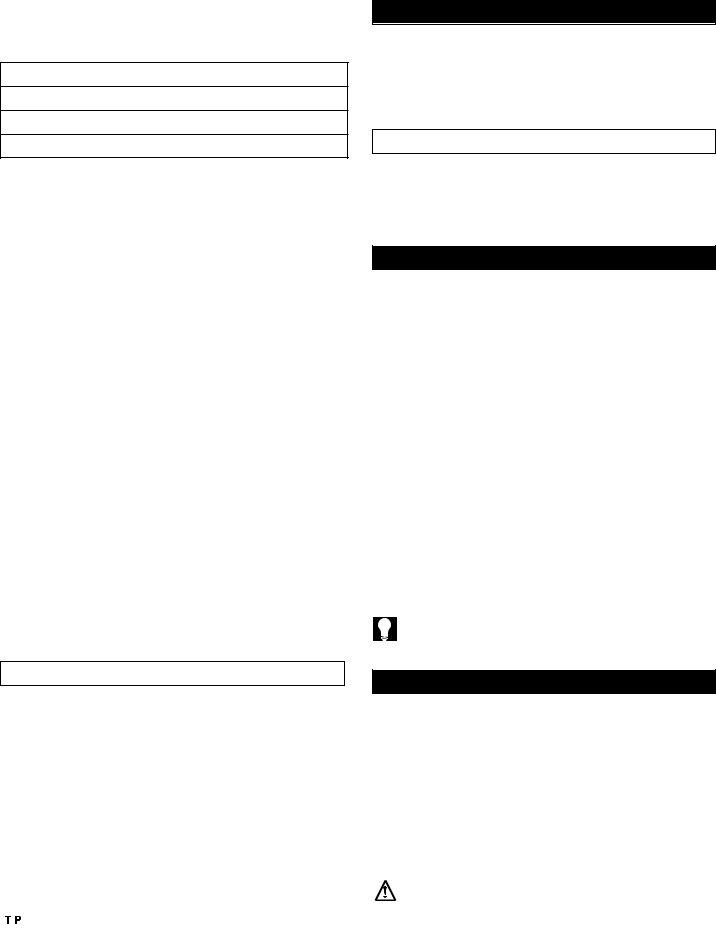|
DISTRIBUTIONS FROM PARTNERSHIPS |
For Pennsylvania personal income tax purposes guaranteed |
|
Non-corporate shareholders and partners should use |
|
payments are classified as follows: |
|
|
|
amounts from PA-20S/PA-65 Schedule RK-1, Section IV |
|
|
|
● If services are rendered directly in the production of in- |
|
through Section VII to determine or calculate owner’s basis. |
|
come from a business, profession, or farm, the guaran- |
|
Partners include Line 12 in net classified income on their |
|
teed payments are gross income from that income class. |
|
Pennsylvania tax returns. |
|
● If services are rendered directly in the production of |
|
|
|
|
|
|
|
|
LINE 10 |
|
|
|
|
|
rental or royalty income, the guaranteed payments are |
|
DISTRIBUTION OF CASH, MARKETABLE SECURITIES |
gross income from that in-come class. |
|
|
|
|
|
|
|
AND PROPERTY NOT INCLUDING GUARANTEED |
HEALTH SAVINGS ACCOUNTS (HSA) |
|
|
|
PAYMENTS |
Contributions by a partnership to a bona fide partner’s HSA |
|
|
|
|
|
|
Enter the partner’s share of distribution of cash, marketable |
are not contributions by an employer. The contributions are |
|
securities and property, other than guaranteed payments. |
treated as a distribution of money and are not included in |
|
With respect to liquidating property distributions, this line will |
the partner’s income. |
|
|
|
|
|
|
|
include the total of cash and the fair market value of mar- |
Contributions by a partnership to a partner’s HSA for serv- |
|
ketable securities and property distributed to the Pennsylva- |
|
ices rendered, however, are treated as guaranteed pay- |
|
nia resident partner. |
|
ments that are deducted by the partnership and included in |
|
|
|
|
|
|
The partner reduces his basis in the partnership by amount |
the partner’s income. In both situations, the partnership can |
|
of distributions. If the distribution amount is in excess of |
deduct the contribution made to the partner’s HSA. |
|
|
|
basis, it must be reported on the resident partner’s return as |
Contributions to a nonresident partner’s HSA for services |
|
taxable gain on PA-20S/PA-65 Schedule D. |
|
|
|
|
|
must be apportioned. |
|
|
|
|
|
LINE 11 |
|
|
|
|
|
|
|
Contributions by an S corporation to a 2 percent share- |
|
GUARANTEED PAYMENTS FOR CAPITAL |
|
holder-employee’s HSA for services rendered are deducted |
|
OR OTHER SERVICES |
by the S corporation as wage or salary expense and in- |
|
Enter the partner’s share of guaranteed payments for capital |
cluded in the shareholder-employee’s gross compensation. |
|
or other services. |
The shareholder-employee can deduct the contribution |
|
|
|
|
|
|
Pennsylvania does not follow federal treatment for guaran- |
made to the shareholder-employee’s HSA. |
|
|
|
teed payments for services. Under Pennsylvania tax law, to |
|
|
|
|
LINE 13 |
|
|
|
the extent paid for other services or for the use of capital, a |
|
|
|
guaranteed payment is: |
GUARANTEED PAYMENTS TO RETIRED PARTNER |
|
|
|
|
● A withdrawal proportionately from the capital of all |
|
|
|
|
Guaranteed payments to a retired partner must meet the ex- |
|
|
partners; |
|
|
ception described in IRC §1402(a)(10). |
|
|
|
|
● A gain from the disposition of the recipient’s partnership |
|
|
|
|
|
|
|
|
|
interest and a loss from the disposition of the other part- |
Generally, retirement payments received by a retired partner |
|
|
ners’ partnership interests, to the extent derived from the |
from a partnership (of which he or she is a member or former |
|
|
capital of the other partners; and |
member) are counted as net earnings from self-employment. |
|
|
● A return of capital by the recipients to the extent derived |
|
|
Certain periodic payments by a partnership to a retired part- |
|
|
from their own capital. |
ner made on account of retirement under a written plan of |
|
Pennsylvania allows the deduction. |
partnership are excluded from the tax. To be effective, the |
|
plan must meet such requirements as are prescribed by Reg |
|
|
|
|
|
|
|
|
LINE 12 |
|
|
|
|
|
§1.1402(a)-17. It must apply to partners generally or to a |
|
ALL OTHER GUARANTEED PAYMENTS |
class or classes of partners, and provide such payments at |
|
least until the retired partner's death. |
|
|
|
FOR SERVICES RENDERED |
|
|
|
|
|
|
|
Enter the partner’s share of such payments. Typically, guar- |
The exclusion applies to retirement payments received by a |
|
anteed payments to partners are paid to the extent the serv- |
retired partner only if he or she renders no services in any |
|
ices are rendered directly in the production of income from |
business conducted by the partnership during the taxable |
|
a business, profession or farm, and/or from rental or royalty |
|
year of such partnership, ending within or with his or her tax- |
|
income. |
|
able year in which amounts were received. At the end of |
|
|
|
|
|
|
|
|
NOTE: The partner must know the class of income |
such partnership's taxable year: (1) there must be no obli- |
|
|
|
|
|
|
from which the partnership made the guaranteed pay- |
gation from other partners to the retired partner, other than |
|
|
|
|
ments. The partner must then properly classify the payments |
to make retirement payments under the plan; and (2) the re- |
|
on his/her PA-40 Individual Income Tax Return. |
|
tired partner's share in the capital of the partnership had |
|
|
|
|
|
|
|
|
IMPORTANT: If the total guaranteed payment includes |
been paid to him or her in full. Code Sec. 1402(a)(10) Reg |
|
|
|
more than one of the income classes described below, |
§1.1402(a)-17. |
|
|
|
|
|
|
|
|
|
|
|
|
www.revenue.pa.gov |
PA-20S/PA-65 RK-1 |
5 |
